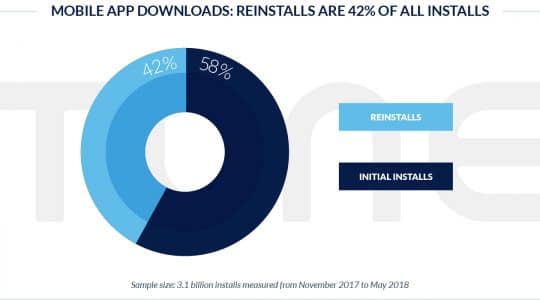
Earnings per click is the be-all end-all performance metric to affiliates.
This key performance metric is your average revenue for each individual click you are driving to an advertiser. And if you don’t think this is the one affiliate marketing metric to keep your eyes on, allow me to explain.
But first, ask yourself a few key questions. Are you studying the metric? Do you know how it is calculated? Are you using it to strategically influence business decisions?
If you answered no to any of the above questions, you are leaving money on the table. And if that isn’t enough to persuade you, let’s cover a few other reasons why this metric matters.
Earnings Per Click Is Your Most Valuable Metric
Earnings per click is an agnostic statistic.
[bctt tweet=”At the end of the day, affiliates want to maximize their profit.” username=”tune”]
The metric doesn’t care how high your conversion rate is. It doesn’t care that exclusive partner payout you may have or the sheer number of clicks you generated. Earnings per click cuts through the clutter and gives you the exact amount of money you can expect to receive for every click you purchase based on historic performance. With that knowledge, it is just up to the affiliate to get their cost per click under their earnings per click to be profitable.
The true potential of the earnings per click metric is fully unlocked when utilized in a paid supply side cost per click or cost per thousand impressions environment. If you can extrapolate a cost per click for every click you drive to your paid advertisements, then you can directly compare this against the earnings per click that is calculated in your tracking software. If you subtract your cost per click from your earnings per click, you get your net profit per click.
(Calculating it looks like this: Net profit per click = earnings per click – cost per click.)
This is key. This is what affiliates thrive on when it comes down to it. Forget conversion rates. Forget click-through rates. Forget payouts. If your earnings per click is higher than your cost per click, you are making money. It’s as simple as that.
Most supply-side advertising platforms will provide you your cost per click, or a way to calculate your cost per click per ad by default. For instance, during my college years, I was operating as a high volume social media affiliate. The self-serve media buying platform I was pushing clicks through offered line-by-line reporting for each of my advertisements and their respective cost per clicks. To harmonize with this, my tracking platform offered earnings per click breakouts by sub ID. This meant that as long as I passed in the creative ID into a sub ID in the tracking links behind my ads, I could directly determine profit for each over any period. Split-testing on easy mode.
How to Calculate Earnings Per Click
Earnings per click is calculated by taking the total earnings you have generated over a period, and then dividing that by the number of clicks you have generated for that same period. This gives you an estimation of what you can expect each individual click you are generating to produce in earnings. This is a figure that is invaluable in a cost per click environment.
(Earnings of an individual click is calculated as total earnings over period “x” over the number of clicks over period “x”.)
3 Tips for Earnings Per Click Campaigns
1. Shop smarter. Let’s say a network approaches you with the same offer you are currently running, but with a higher payout. An attractive offer, right? In reality, this actually means nothing. Sure, the payout is higher — but what if the conversion rate is much lower? You could actually be losing money by running with this new network. This is where earnings per click becomes vitally important. If your EPC is higher on this new network than the old, you are now making more money. The conversion rate doesn’t matter. The payout doesn’t matter.
2. Test quicker. Having one metric to use as a baseline to measure performance makes split-testing a breeze. You now have the ability to juggle multiple networks, or constantly swap out links, while only having to focus on the earnings per click of those campaigns. In such a fluid, fast flowing industry, time is your most valuable asset. Calculating earnings per click gives you back time you were spending performing tedious calculations.
3. Feel safer. Fraud is, and will always be, a nagging, frustrating problem in the performance marketing world.
[bctt tweet=”Monitoring earnings per click as your anchor point facilitates a simple sense of security and control.” username=”tune”]
It is a trivial task to record and chart trends by hour, day, month, when you are only relying on a single key metric that pulls from both your gross spend and earnings. Effortless trend monitoring breeds obvious trend outliers. This empowers you, as a marketer, to focus your time on what’s critically important — performance.
A Final Thought
Running as an affiliate business means spending a lot of time looking for and testing offers. If your main goal is to make as much profit as possible, you need to optimize where you spend your time. Getting lost in numbers and metrics is easy, and if you’re not analyzing the right things, you’re wasting time and losing money.
Focusing on earnings per click may seem like too simple a solution, but it’s a quick way to ensure that you’re making money efficiently.
For more tips, check out TUNE’s Ultimate Guide to Partner Marketing.
This article was originally published in August 2016 and has been updated with new information and insights.
Author
Becky is the Senior Content Marketing Manager at TUNE. Before TUNE, she handled content strategy and marketing communications at several tech startups in the Bay Area. Becky received her bachelor's degree in English from Wake Forest University. After a decade in San Francisco and Seattle, she has returned home to Charleston, SC, where you can find her strolling through Hampton Park with her pup and enjoying the simple things in life.



Nice heroshot. A guy picking his nose. Is that what they’re laughing at?